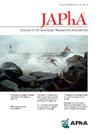Development and implementation of a best practice alerting process for naloxone prescribing at rural community pharmacies in Wisconsin: A pilot study
IF 2.5
4区 医学
Q3 PHARMACOLOGY & PHARMACY
Journal of the American Pharmacists Association
Pub Date : 2025-05-01
DOI:10.1016/j.japh.2025.102382
引用次数: 0
Abstract
Background
The opioid overdose epidemic continues to worsen in the United States, with opioid-related deaths increasing by 13 folds from 2000 to 2022 in Wisconsin. Naloxone, an opioid antagonist, can save lives by reversing opioid overdose in a matter of minutes. However, naloxone access and utilization remain suboptimal.
Objective
This study examined the development and implementation of best practice alerting (BPA) processes within community pharmacies. This study assessed to what extent the BPA processes (1a) prompted pharmacists to discuss naloxone with high-risk patients; (1b) increased the number of naloxone prescriptions dispensed; and (2) evaluated the facilitators and barriers to implementing the BPA processes.
Methods
A pilot study was conducted to develop and implement a BPA process in 3 rural community pharmacies in Wisconsin. The process involved staff identifying high-risk patients, initiating naloxone discussions, and offering naloxone prescriptions. Quantitative monthly data were recorded by pharmacies. Semi-structured interviews were conducted with one pharmacist from each pharmacy to assess the implementation process and outcomes. Descriptive statistics were used to analyze quantitative data. Interview transcripts were analyzed for key themes describing facilitators and barriers to the implementation process.
Results
The naloxone alerting process resulted in a notable increase in naloxone discussions and naloxone prescriptions dispensed. Pharmacists reported that pharmacy staff buy-in and engagement, adequate staffing, developing meaningful partnerships, and using depersonalizing, destigmatizing, and normalizing approaches in discussing naloxone with patients were key facilitators. Key barriers included naloxone cost or co-payment and time constraints.
Conclusion
Implementing a BPA process in community pharmacies can notably increase naloxone prescribing for high-risk patients. Positive message framing, staffing, meaningful partnerships, and staff buy-in were key facilitators of implementation. Identified barriers were cost or co-payment and time constraints.
威斯康星州农村社区药房纳洛酮处方最佳实践警报流程 (BPA) 的开发与实施:试点研究。
背景:阿片类药物过量流行在美国继续恶化,从2000年到2022年,威斯康星州阿片类药物相关死亡人数增加了13倍。纳洛酮是一种阿片类药物拮抗剂,可以在几分钟内逆转阿片类药物过量,从而挽救生命。然而,纳洛酮的获取和利用仍然不够理想。目的:本研究考察了社区药房最佳实践报警(BPA)流程的发展和实施。这项研究评估了BPA过程在多大程度上促使药剂师与高危患者讨论纳洛酮;(1b)纳洛酮处方数量增加;(2)评估了实施BPA过程的促进因素和障碍。方法:在威斯康星州的三个农村社区药房进行了一项试点研究,以开发和实施双酚A过程。该过程包括工作人员识别高危患者,启动纳洛酮讨论,并提供纳洛酮处方。每月定量数据由药店记录。对每个药房的一名药剂师进行了半结构化访谈,以评估实施过程和结果。定量资料采用描述性统计分析。对访谈记录进行分析,找出描述实施过程的促进因素和障碍的关键主题。结果:纳洛酮警示过程导致纳洛酮讨论和纳洛酮处方的发放明显增加。药剂师报告说,药房工作人员的支持和参与、充足的人员配备、发展有意义的伙伴关系,以及在与患者讨论纳洛酮时使用去人格化、去污名化和正常化的方法是关键的促进因素。主要障碍包括纳洛酮费用或共付和时间限制。结论:在社区药房实施双酚a流程可显著增加高危患者纳洛酮的处方。积极的信息框架、人员配备、有意义的伙伴关系和员工支持是实施的关键促进因素。确定的障碍是费用或共同支付和时间限制。
本文章由计算机程序翻译,如有差异,请以英文原文为准。
求助全文
约1分钟内获得全文
求助全文
来源期刊
CiteScore
3.30
自引率
14.30%
发文量
336
审稿时长
46 days
期刊介绍:
The Journal of the American Pharmacists Association is the official peer-reviewed journal of the American Pharmacists Association (APhA), providing information on pharmaceutical care, drug therapy, diseases and other health issues, trends in pharmacy practice and therapeutics, informed opinion, and original research. JAPhA publishes original research, reviews, experiences, and opinion articles that link science to contemporary pharmacy practice to improve patient care.

 求助内容:
求助内容: 应助结果提醒方式:
应助结果提醒方式:


